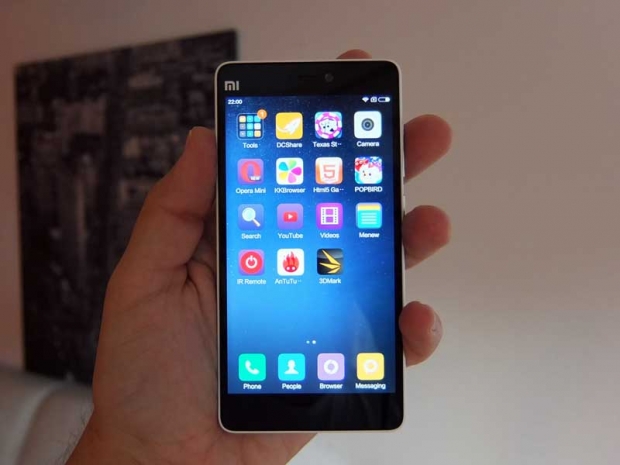Index
Audio, Display and Camera Quality
The 5-inch 1080p display is excellent. However, Xiaomi is pushing it when it talks of “ultra-narrow bezels”. The bezel size is average at best, as the screen is 62.2mm wide, yet the phone is 69.6mm wide, like most 5-inch phones on the market today. The screen to body ratio is about 72%, which is quite good for a 5-incher.
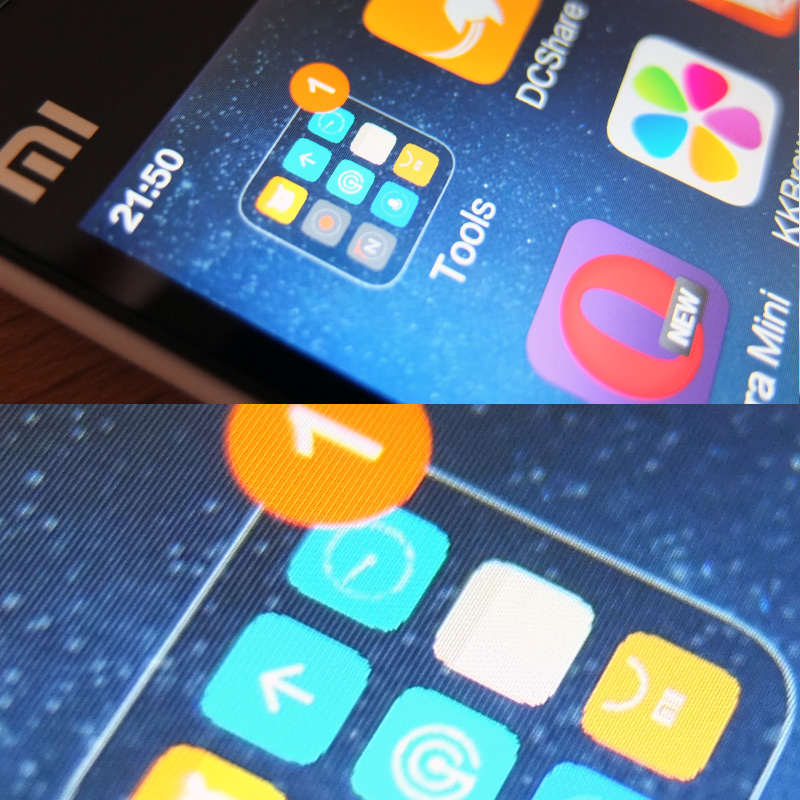
Image quality is not an issue. At 441ppi, everything looks crisp, and the colours are good. In fact, the colours may be a tad oversaturated. Xiaomi claims 95% NTSC colour gamut. Viewing angles are good, the digitizer is accurate and there’s nothing to complain about.
The display is quite bright and remains readable outdoors. Xiaomi also uses a few software and hardware tweaks to optimize performance outdoors, and we should note that they work. Basically, the display would not feel out of place in a high-end smartphone.
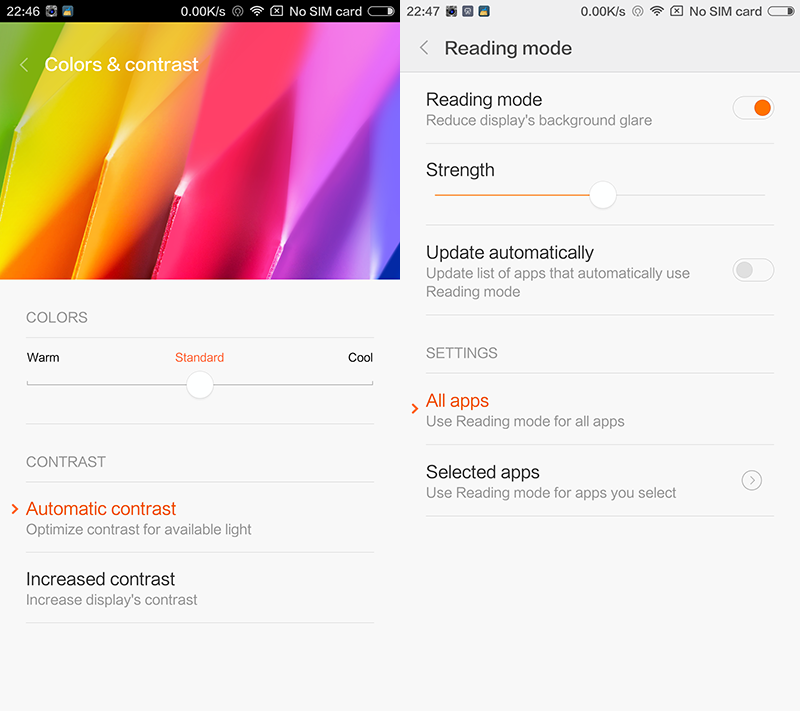
Users can adjust the colour temperature and there is a special reading mode, designed to reduce glare and make e-books and PDFs more enjoyable.
Audio quality is not an issue, either. The phone features a noise cancelling microphone and call quality is excellent. The rear-firing mono speaker also does a good job. It's not the loudest phone around, but the sound quality is good even when it is maxed out, and there is a lot of bass. The small plastic hump next to the speaker ensures that it’s not muffled while sitting on a flat surface.
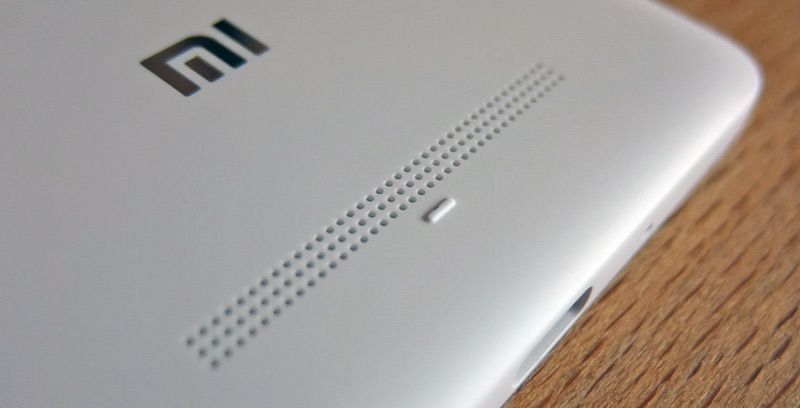
So what about that new PDAF camera? PDAF stands for phase-detection auto-focus and it eliminates the need to measure contrast within a sensor field, allowing the lens to quickly adjust its focal point and focus. So how does it work? Essentially, CMOS sensors with PDAF support feature a number of pixels with alternate halves blacked out. PDAF is also used on SLR cameras, using separator lenses. Blacking out pixels from one side is supposed to mimic this in a tiny CMOS sensor, without additional optics. Long story short, PDAF sensors can figure out the correct focal point and dramatically reduce the time needed to focus, at least in theory.
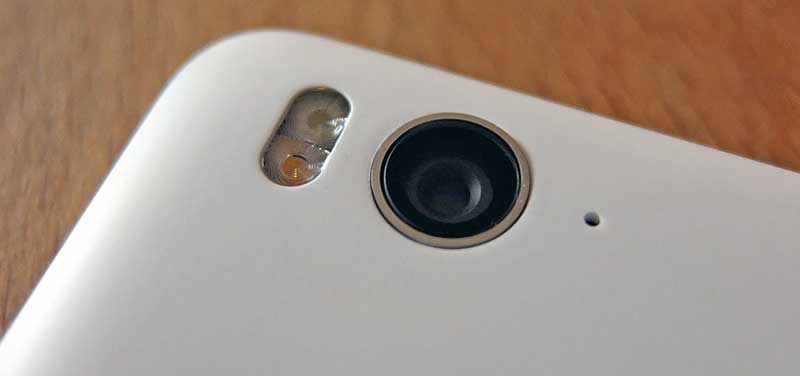
How does this work on the Mi4c? In some situations, it works as advertised, but in some situations the results are mixed. In any case, PDAF helps the camera focus in a bit faster, which means you will end up with more usable shots and fewer out of focus disasters. Don’t get us wrong, PDAF is not a game-changer, we are not looking at a huge boost in focus speed and a technology that will ensure every shot is properly focused, but it’s a useful addition to smartphone cameras.
While the new sensor is intriguing, the 5-element lens and f/2.0 aperture are not that impressive. In fact, the original Mi4 sports an f/1.8 aperture, which means it should be a better performer in low light.
Still, the Xiaomi Mi4c has one of the best 13-megapixel cameras we’ve seen on a non-flagship Android phone so far, so let's take a look at some samples shots. Mind you, the weather was awful, but we did what we could to try it out in relatively good light. Also shots were made in Auto mode, we did not tweak any manual controls, we just let the camera do its job.
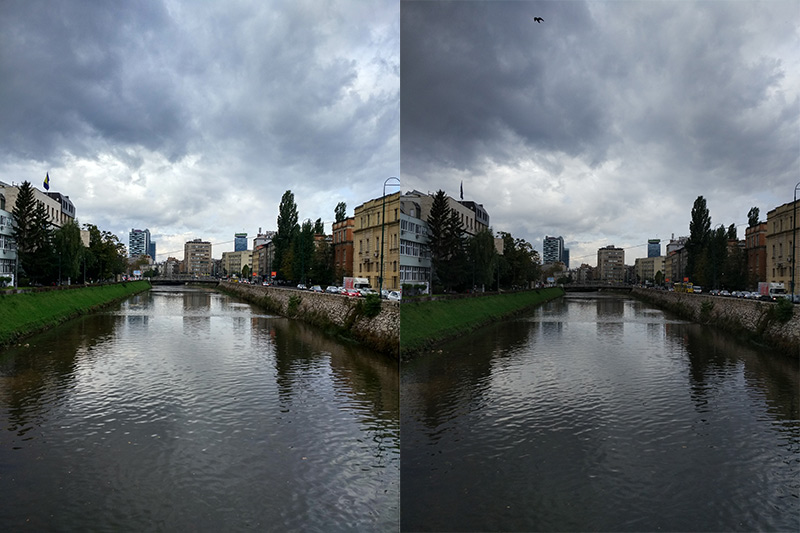
Despite the overcast, daylight shots are excellent, on par with flagships of yesteryear, and in some cases even better. HDR works well, too, and helps boost dynamic range without a lot of ghosting. The Mi4c captures and processes HDR shots in no time.

Here is an HDR shot cropped to 100%. Note the ghosting on the Apple flag (no, it's no coincidence that we took a shot of an Apple shop, nor that the shop is located in what used to be a church).

Low-light imaging is not that impressive. A faster aperture would probably make a difference, and so would some software tweaks. There is no optical image stabilization, either, but we don’t really expect it on such an inexpensive device. Still, the results are above average for this market segment.
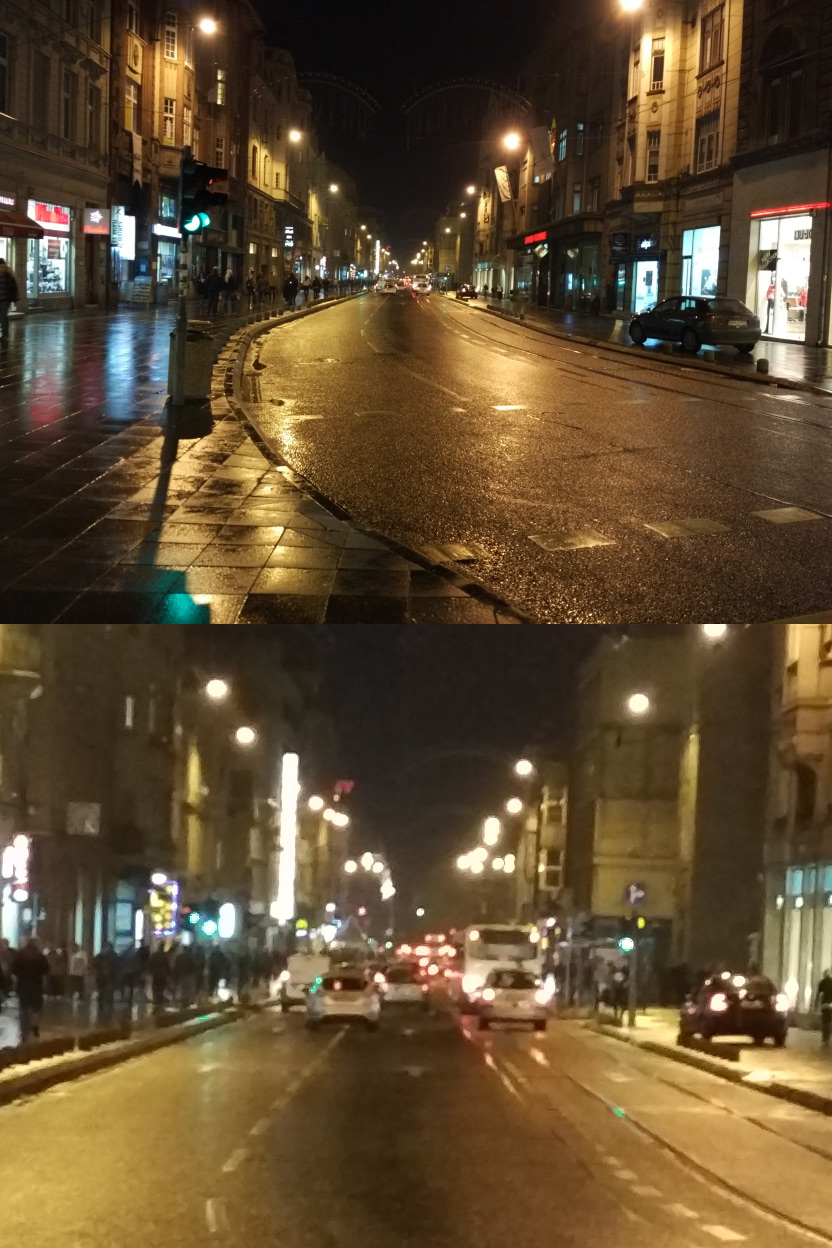
As you can see, post-processing is aggressive and there's not a lot of noise in night shots. This obviously makes the image a tad softer and kills a bit of detail. Also, the Mi4c features a dual-LED, dual-tone flash. It’s quite powerful and can be of good use.
The camera also performs well indoors. Daytime shots are properly exposed and the white balance is spot on, although a bit more contrast would help.
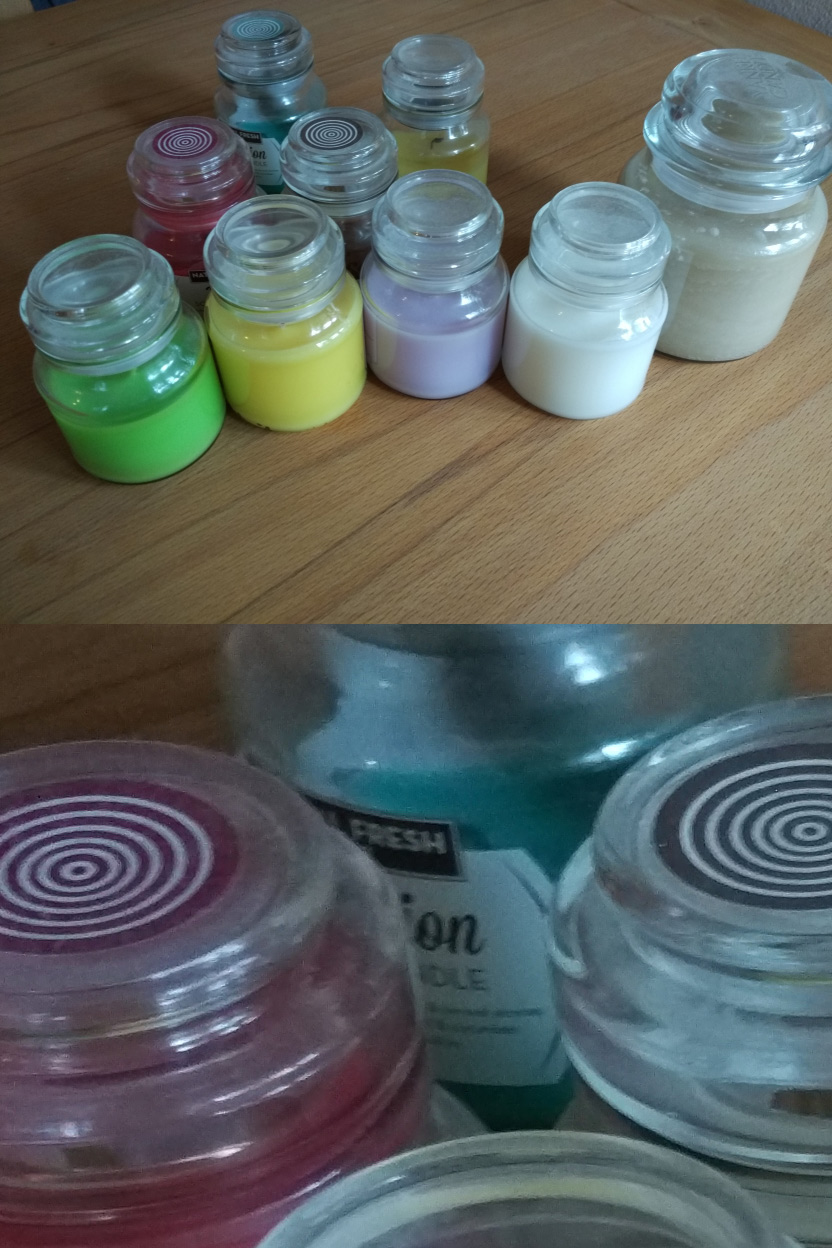
We shot the same scene at night, under incandescent lighting, and the results were good. However, once again we see that Xiaomi hates noise, and a fair amount of post-processing is visible.

As far as video goes, there’s no 4K support and the settings max out at 1080p (not that 4K would make much sense on a device with 16GB of storage). Video quality is good, no complaints there.
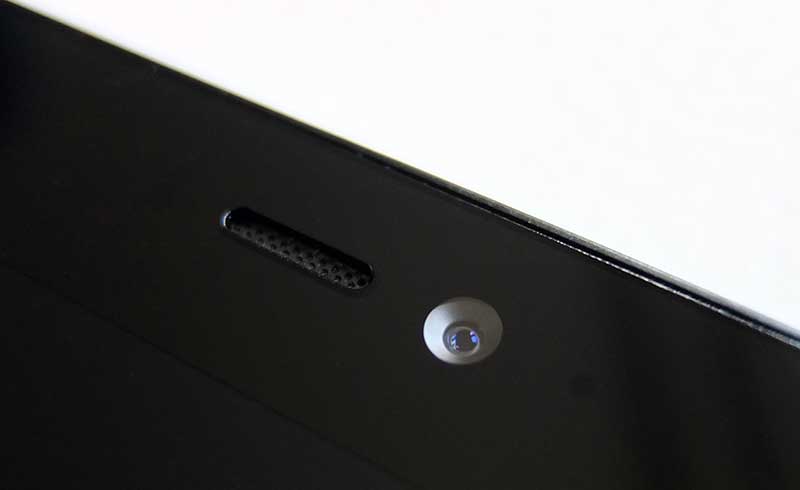
The front-facing camera is a 5-megapixel job with an f/2.0 lens and 85 degree wide-angle lens. It can also record 1080p video. Overall quality is quite good and the wide lens comes in handy as well.
The MIUI camera app is quite good and allows users to access a lot of manual controls. The interface is clean and fast.
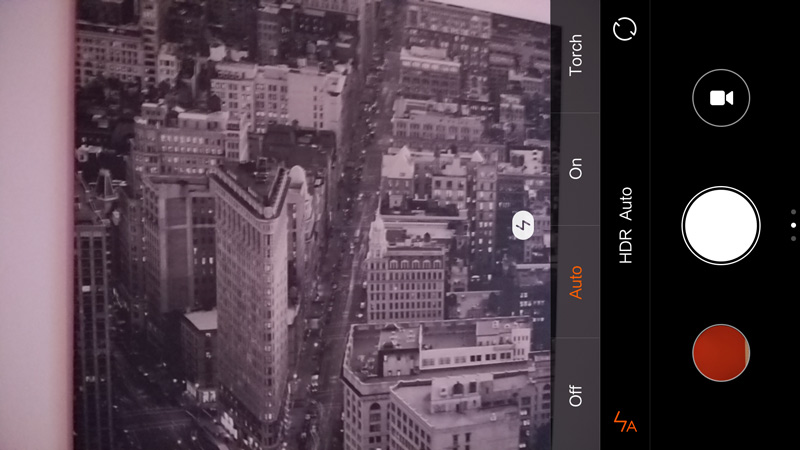
You can also access a number of useful and not-so-useful features with a simple swipe. If you want to take a selfie, a vertical flick will activate the front camera.
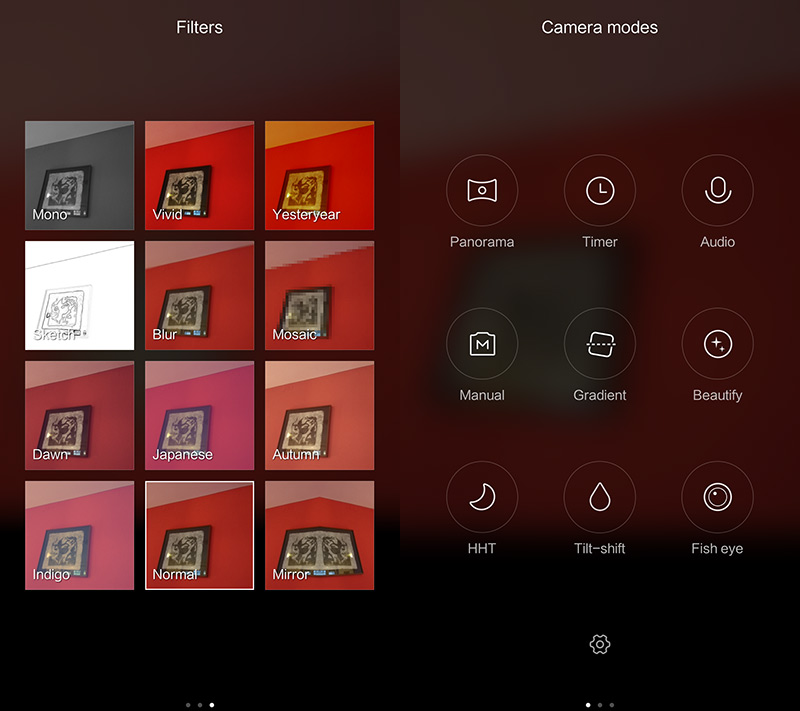
Overall, we are pleased with both cameras and the app. It’s hard to ask for more from a mid-range device. We've come across $500 devices with similar or inferior imaging capabilities.

